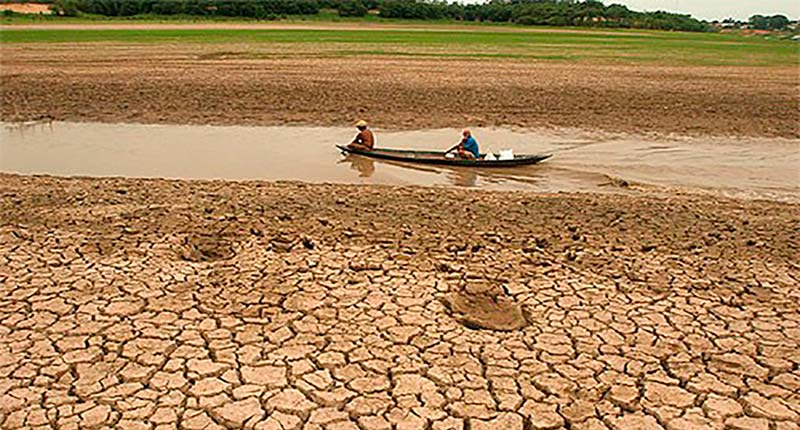Source: Diario El Luchador
Magazine all about Climate Change
Climate change, what is it and
what are its causes?
Anthropogenic climate change is the variation of climate status attributed to human activity that alters the composition of the atmosphere and has consequences on the entire planet. The main cause of climate change is global warming caused by emissions of greenhouse gases (GHG), of anthropogenic origin, among which CO2 is the most frequent. The sources responsible for these emissions are the burning of fossil fuels such as oil, coal and gas, used mainly in industry and transport. Also, among the main causes are the deforestation of forests and rainforests and the large forest fires caused directly or indirectly by humans. GHGs pass into the atmosphere, but also into oceans and soils, and are expressed in parts per million (PPM). Other gases contribute to global warming and climate change, such as methane, nitrous dioxide and others, but to a lesser extent.
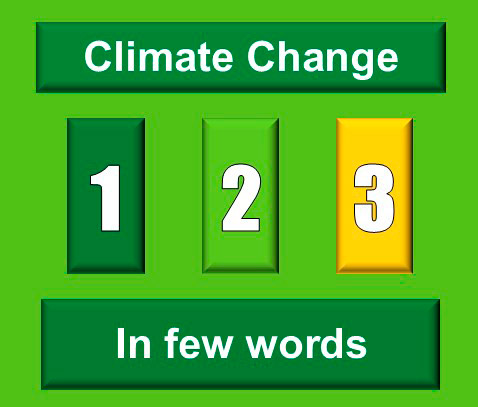
Three attached phenomena
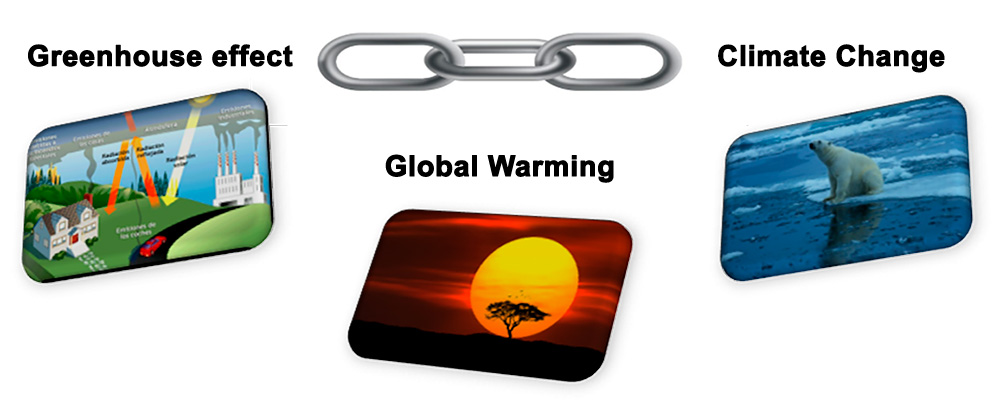
The greenhouse effect and climate change
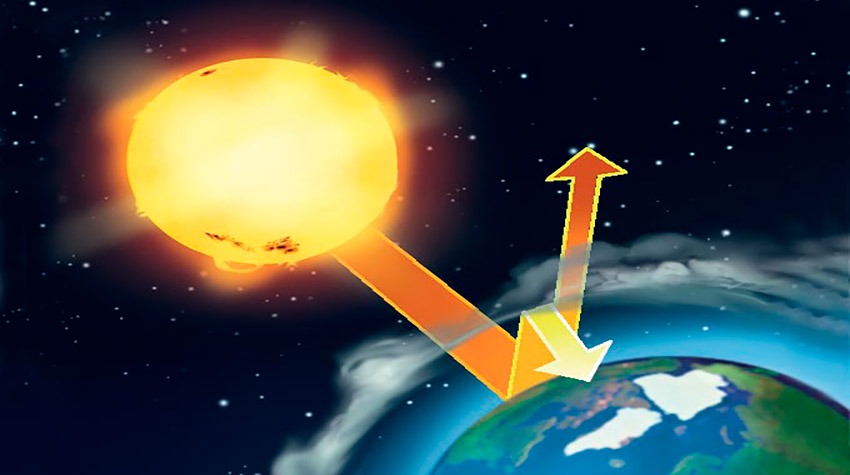
Source: Timetoast
The yellow arrow that stays on Earth we could call it “vector of life”. It represents the part of the solar rays that do not be able to escape to the cosmos thanks to the natural greenhouse effect of our planet. This allows maintaining a temperature in relatively constant ranges. The problems began when the concentration of greenhouse gases increased due to human activity, which causes the heat retained to become greater than natural. The consequence is a complex phenomenon called climate change that occurs through important and varied phenomena that disrupt life on Earth. It will depend on our ability and willingness to increase or stop it.
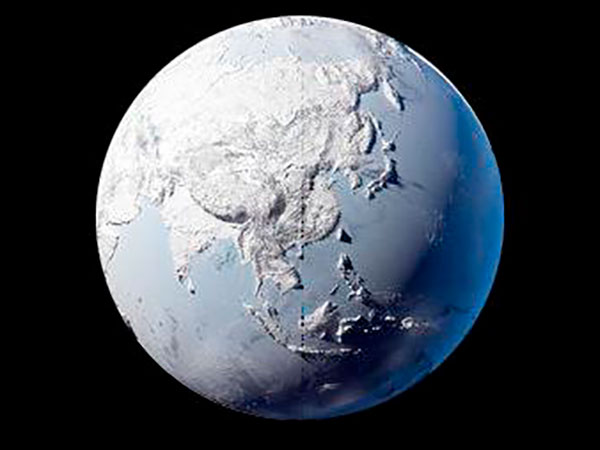
Source: PreguntameAqui.com
Without the greenhouse gases present in the atmosphere, such as carbon CO2 or water vapor (H2O), the average temperature on Earth would be about 33 ° C lower than the current one, at an average of 18 ° C below zero, which would make life impossible the planet as we know it.
Causes and Effects of Climate Change
Climate change: what you need to know
They saw it before anyone else
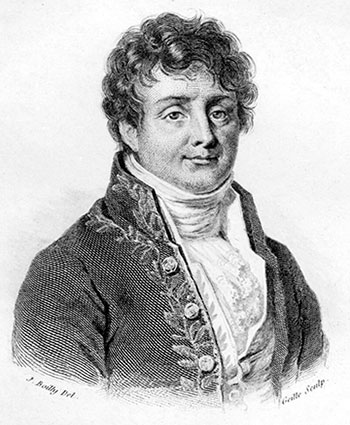
Source: Wikipedia
“The Earth should be much colder as is our planet”
Jean-Baptiste Joseph Fourier (1768-1830), a French mathematician and physicist, in 1824 calculated that an object the size of the Earth and with a similar distance from the sun, should be much colder as is our planet. He affirmed that it was maintained in a temperate climate because our atmosphere retains the heat as if it were under glass. Thus, Fourier has the honor of being the first to use the greenhouse analogy.

Source: Foreplanner.com
“Fossil fuels could accelerate the warming of the Earth”
Svante Arrhenius said it in 1896. The Swedish scientist was the first to proclaim that fossil fuels could accelerate the warming of the earth. Arrhenius along with Thomas Chamberlin, calculated that human activities could cause the temperature increase by adding carbon dioxide to the atmosphere. His observation acquires greater value if we consider that he did his when there was still no automotive gasoline traffic.

Source: Geografia
At what level of the atmosphere does the greenhouse effect occur?
The layers of the atmosphere have been subdivided into troposphere, stratosphere, mesosphere, thermosphere and exosphere. The phenomenon of the greenhouse effect takes place in the lower layers. There, a part of the solar rays is retained, allowing a relative stability of the temperature on the planet.
Anthropogenic causes of global warming
Greenhouse
gases emission
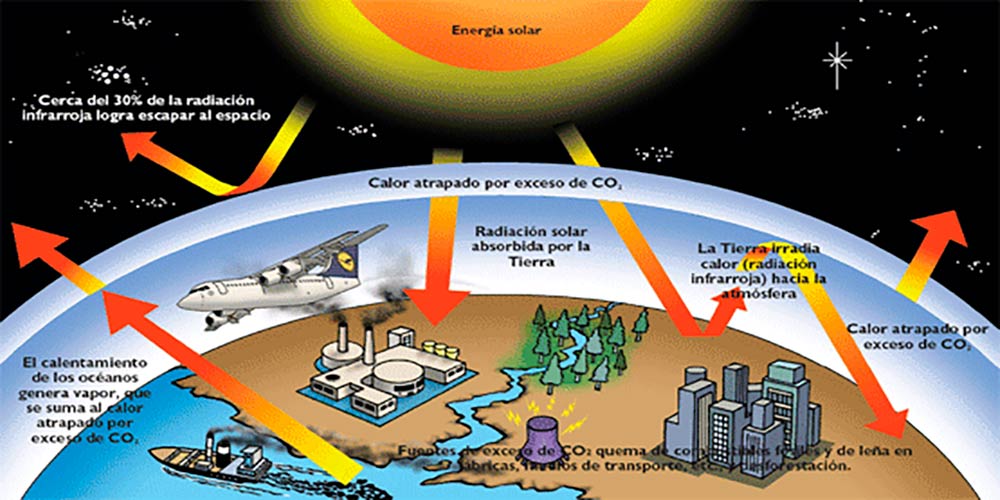
Source: Blog Irma Robles
Deforestation
of forests
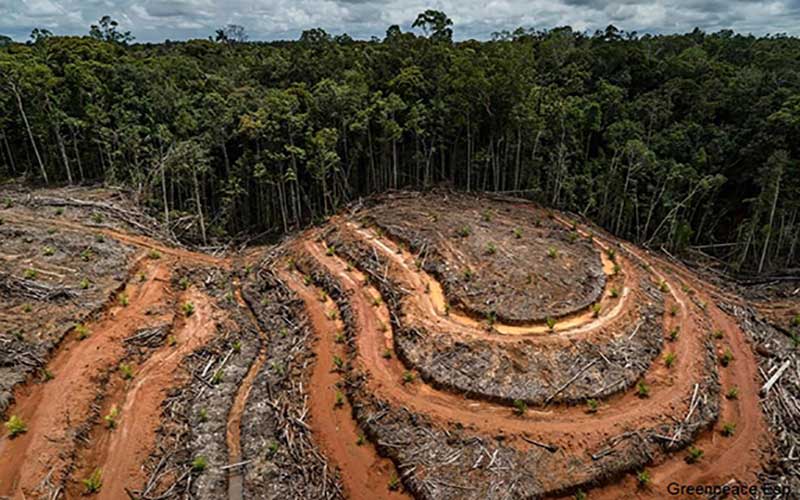
Source: Greenpeace
Intentional
wildfires
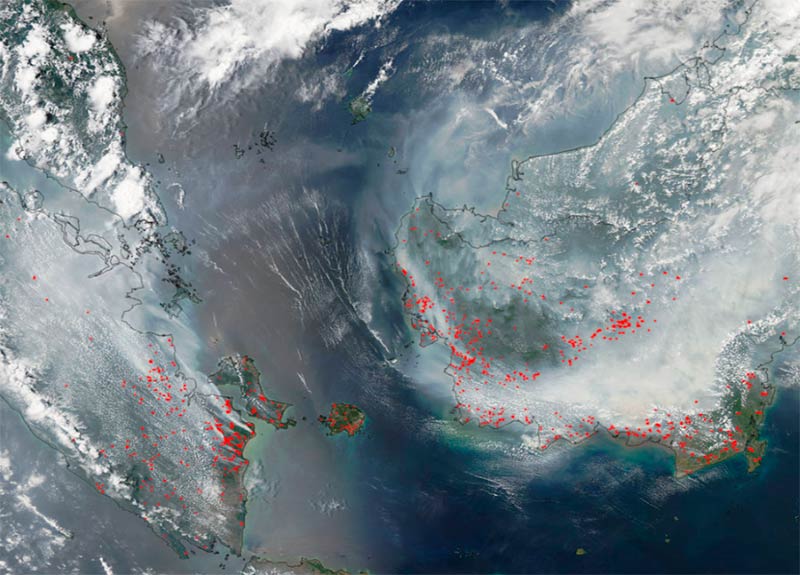
Photo: NASA
Threats hanging over the global climate system
There is more carbon under permafrost and peat bogs than all emissions made since 1750. We must prevent it from escaping into the atmosphere.
The threat
of permafrost
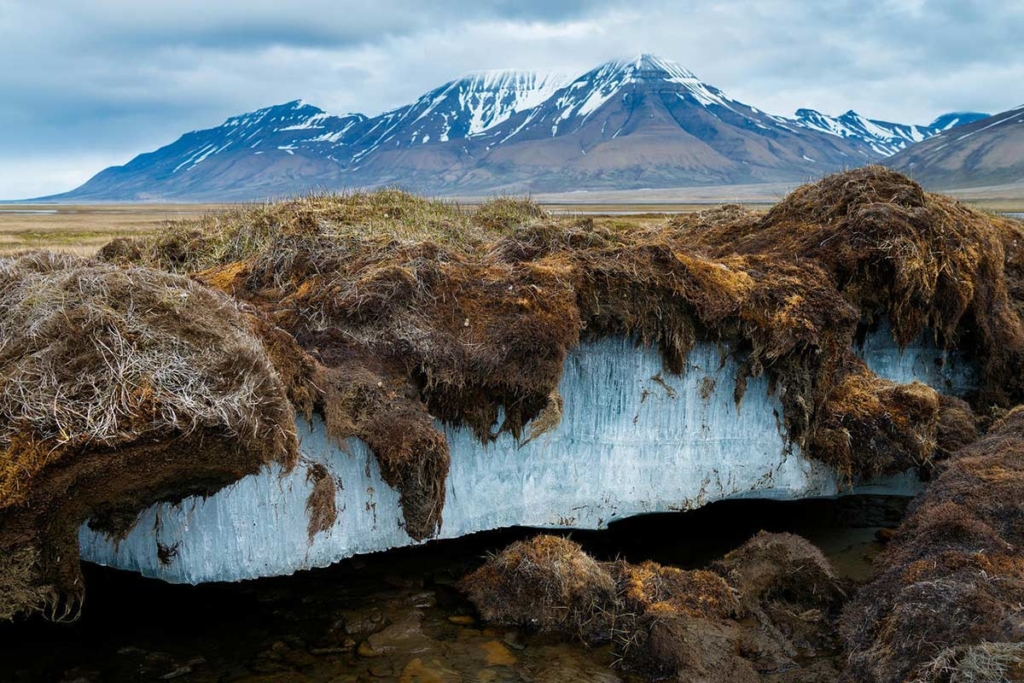
Source: Periodistadigital.com
Carbon under
the peat bogs
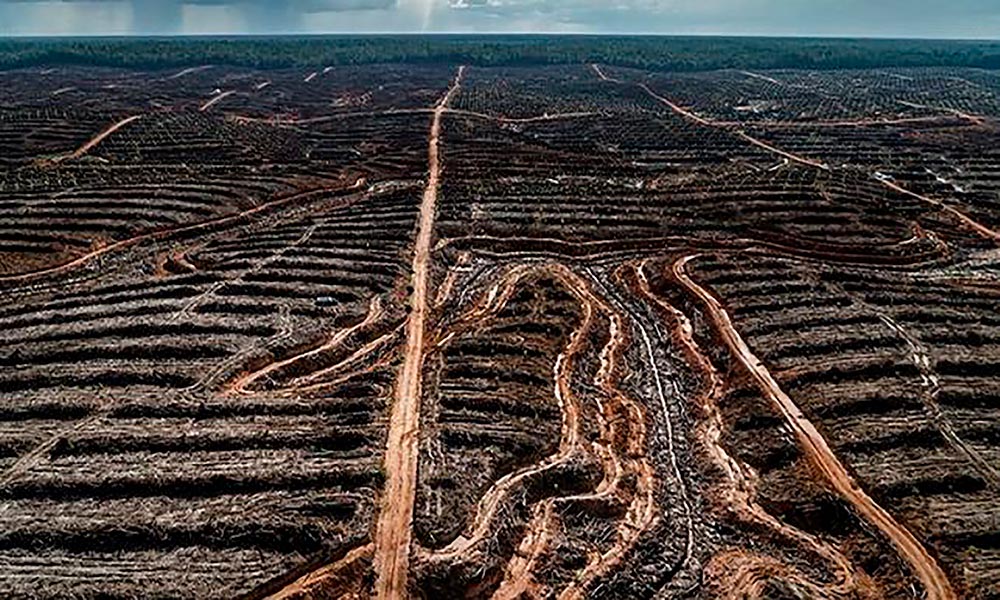
Source: Eldiario.es
To see in detail these causes and dangers, check out our Magazine All about Global Warming
In the same image, two main causes
of global warming
Emission of greenhouse gases and logging

Source: Facebook.com
A terrifying competition between two trucks. Are we really Homo sapiens?
Are
we
playing
with
their
future?
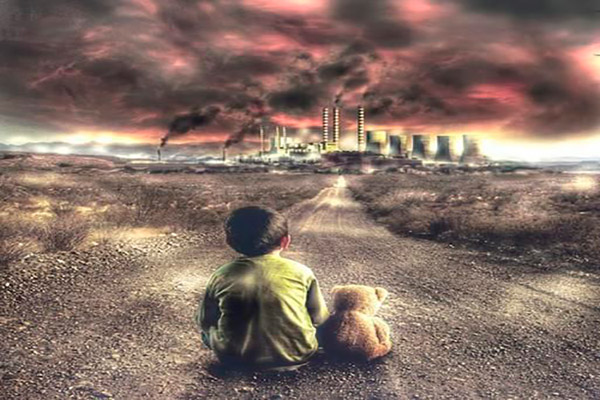
The 10 largest CO2 emitters
China 28.21%, USA 15.99%, India 6.24%,
Russia 4.53%, Japan 3.67%, Germany 2.23%,
South Korea 1.75%, Iran 1.72%, Canada 1.71%
Saudi Arabia 1.56%

Source: Wikipedia
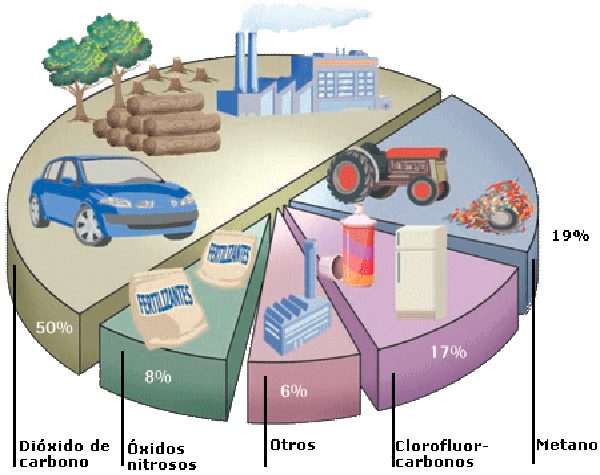
Source: juntosporelambiete2015.blogspot.com
Emissions of
greenhouse gases
by types of fuels
and sectors
Consequences of climate change
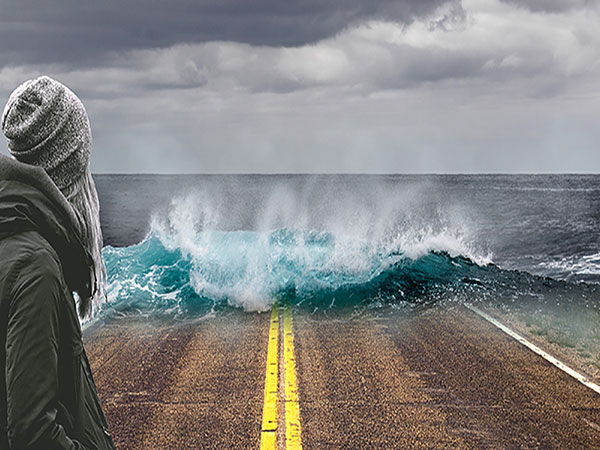
Source: Pexels
In the coming decades, millions of people would have to flee the coasts if climate change cannot be stopped due to the increase in the level of the seas due to the melting of glaciers and polar ice.
Expectations of massive
migrations if climate
change cannot be stopped
Six degrees that could change the world
Re-thinking Progress: The Circular Economy
Defrosting of glaciers and polar ice
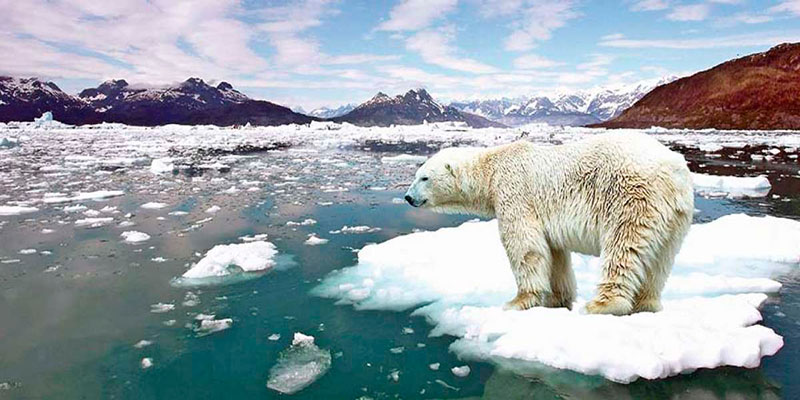
Source: Eltelegrafo.com.ec
Polar bears fight for survival as sea ice melts
Sea level rise is so much more than melting ice
The increase in the level of seas and oceans could be higher than expected
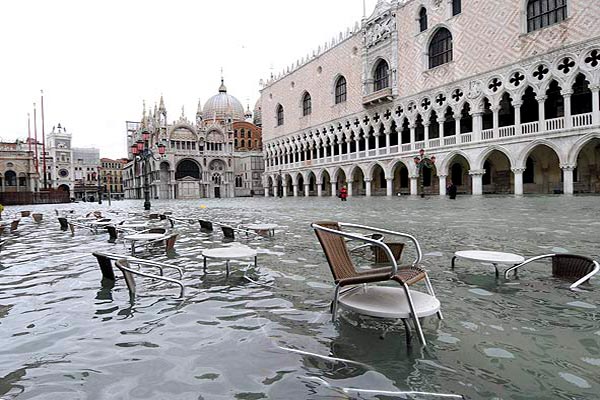
Source: 20Minutos
The periodic floods of Venice, the so-called “acqua alta” correspond to old-time phenomena, whose causes are varied. However, with the projections of sea level rise, calculated between 20 and 25 cm, or even higher, according to statements by some scientists would be very problematic for the city of gondolas and love.
We bring this photo as a sample to imagine what might happen in the towns and cities located a few centimeters from the sea level, because of the fusion of the glaciers and polar ice.
Desertification of soils and shortage of drinking water
The Future of Water
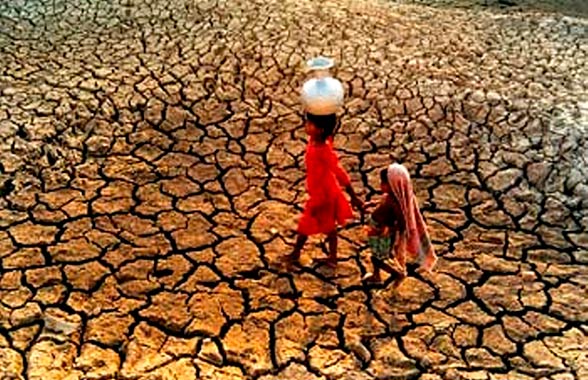
Source: ONU
Shortage of water and food for animals
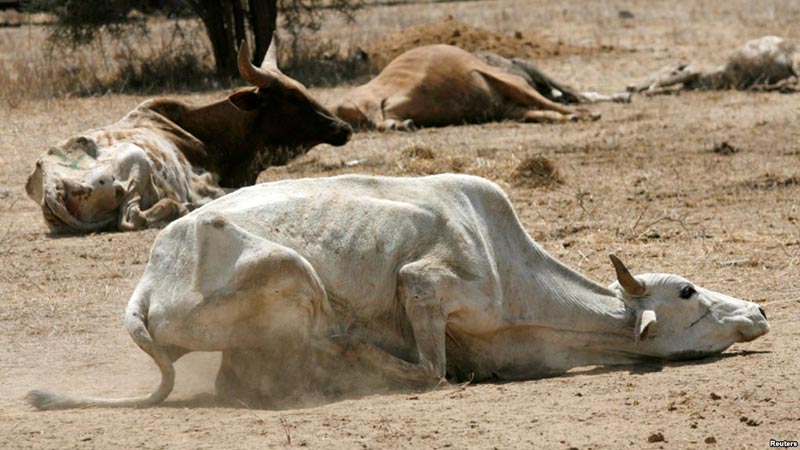
Source: Reuters
The fires of the peat bog
Forest fires
Catastrophic floods

Source: Formato 7
The fury of nature in the world
Unusual hurricanes
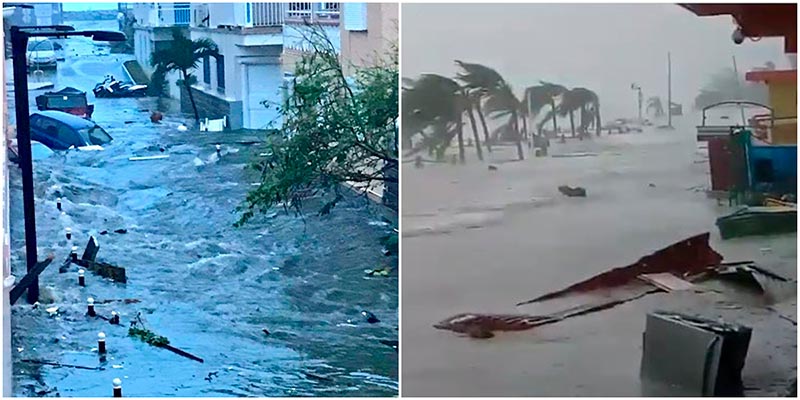
Source: Despiertadominicano
Hurricane Irma (Sep-2017), a novel event occurred. For the first time a cyclone acquired category 5 in the Atlantic Ocean, before reaching the Caribbean. As if that were not enough, the phenomenon was repeated the same month with Hurricane Maria. This unprecedented pair of category 5 hurricanes in the Atlantic is unprecedented and has raised suspicions about global warming and its relationship to intensify cyclonic systems.
For more details check our Magazine All about Hurricanes
Destruction of coral reefs
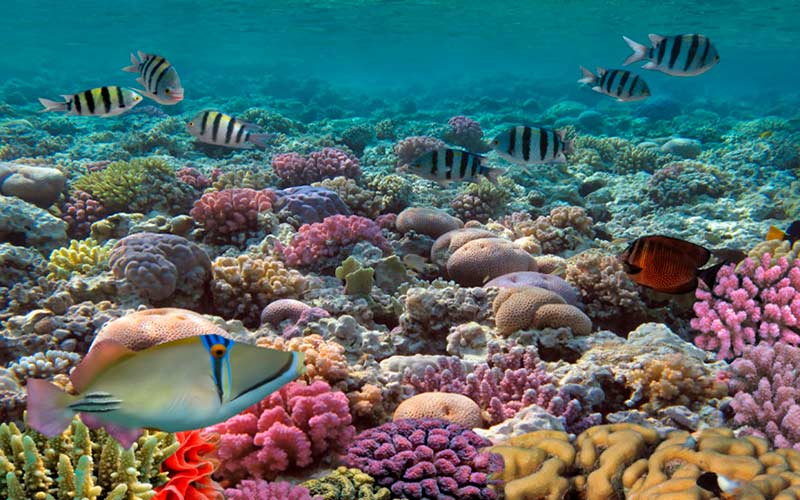
Source: Aquaworld
The coral reef
MultiVu
Impact of biodiversity

Source: SELVA AMAZONICA – WordPress.com
Why is biodiversity so important?
National Geographic – BID
Losses of harvests

Source: RTVE.es
Famine
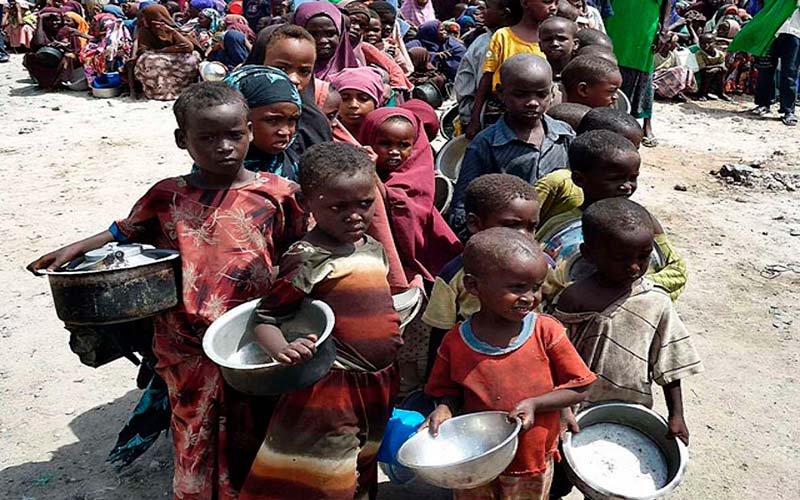
Source: El Intransigente
Have we entered the Anthropocene?
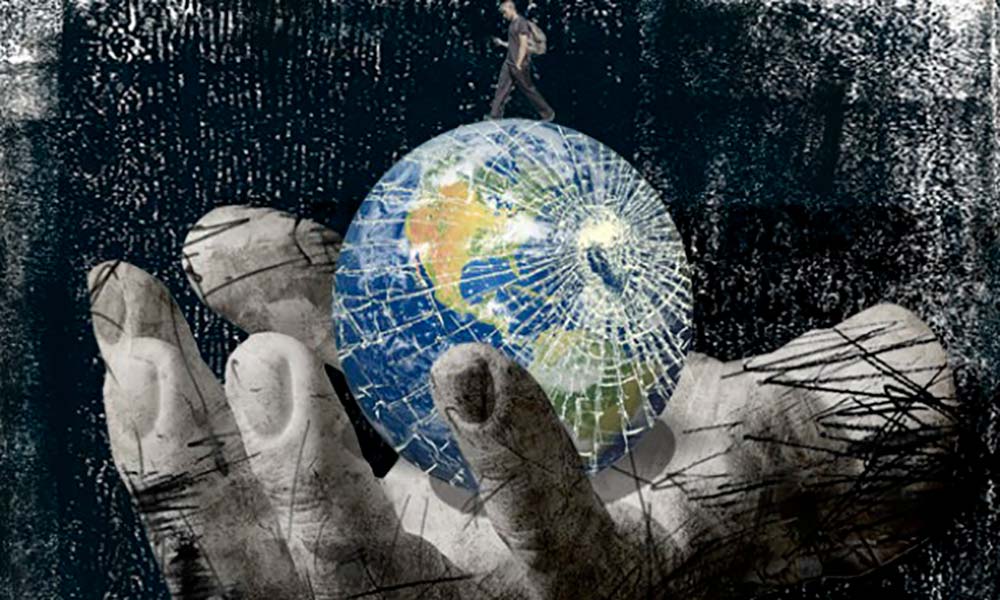
Illustration: Giovanni Tazza
The Anthropocene, according to a group of researchers, begins with the discovery of radioactive waste left by atomic bombs. “We have already changed the Earth: the Anthropocene is the moment in which humans manage to change the life cycle of the planet, when humans remove the planet from its natural variability,” explains Alejandro Cearreta, a Spanish scientist and member of a group of 35 specialists, who after seven years of research agreed to consider the Anthropocene as a new geological epoch within the Quaternary period.
The record of CO2 emissions
that marks the beginning
of a new era
of climate change”
Headline of BBC Mundo on 10-24-2016 announcing
that 400 PPM was reached for the first time

Only 18 months were enough to reach a new level
Measured by the Observatory of Mauna Loa on 04-24-2018
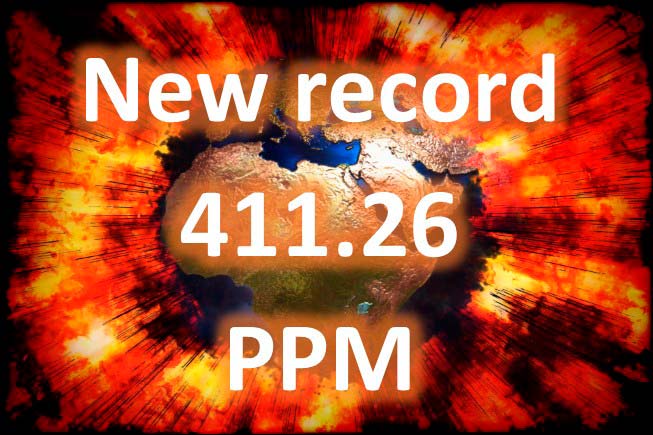
Modif: SGK-PLANET
What are PPM?
It is the abbreviation of parts per million and refers to the concentration of CO2 present in the atmosphere.
What does 411 PPM mean?
Since humans first appeared on Earth, the planet has entered the 400 ppm era first. This means greater global warming and a climate change increasingly difficult to reverse. It will take millennia to lower that concentration.
29-04-2018 Observatory of Mauna Loa.
For millennia CO2 PPMs had not passed the 300 red line
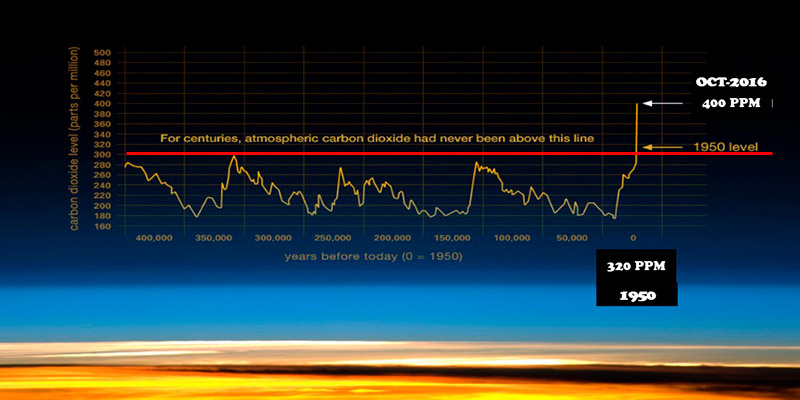
Modif: SGK-PLANET
What must we do to
stop climate change?
The precursor conferences of the Paris Agreement

Source: Saúl E. Hernández Ayón
In 1972, at the initiative of Sweden, the First Earth Summit was held, in conjunction with the UN, also known as the “United Nations Conference on the Human Environment.” At this meeting the “Declaration of Stockholm” was produced, comparable with the Declaration of Human Rights, oriented towards the normalization of the relations of human beings with the environment.

Source: timetoast.com
In 1992 was celebrated “The Second Earth Summit”, held in Rio de Janeiro. It issued the “Rio Declaration”, reaffirmation of the “Stockholm Declaration” and gave its approval to the creation of the “United Nations Framework Convention on Climate Change” (UNFCCC). It entered into force in 1994. As the supreme organ, the COP, Conference of the Parties, was established to give practical meaning to its objectives.

Modif SGK-PLANET
In 1997, in Kyoto, binding targets for GHG emissions were set for 37 industrialized countries, but two of the largest emitters, the United States and China, did not ratify the document. The Kyoto Protocol entered into force in 2005. It was agreed to reduce 5% of GHG emissions between 2007 and 2012. The Kyoto Protocol failed and was replaced by the Paris Agreement which will come into force in 2020.
The Paris Agreement
The Paris Agreement is an ambitious global agreement to combat climate change, negotiated during COP21, Paris 2015, the twenty-first Conference of the Parties for climate change. The landmark document has been adopted by 197 countries and officially signed on April 22, 2016, Earth Day,
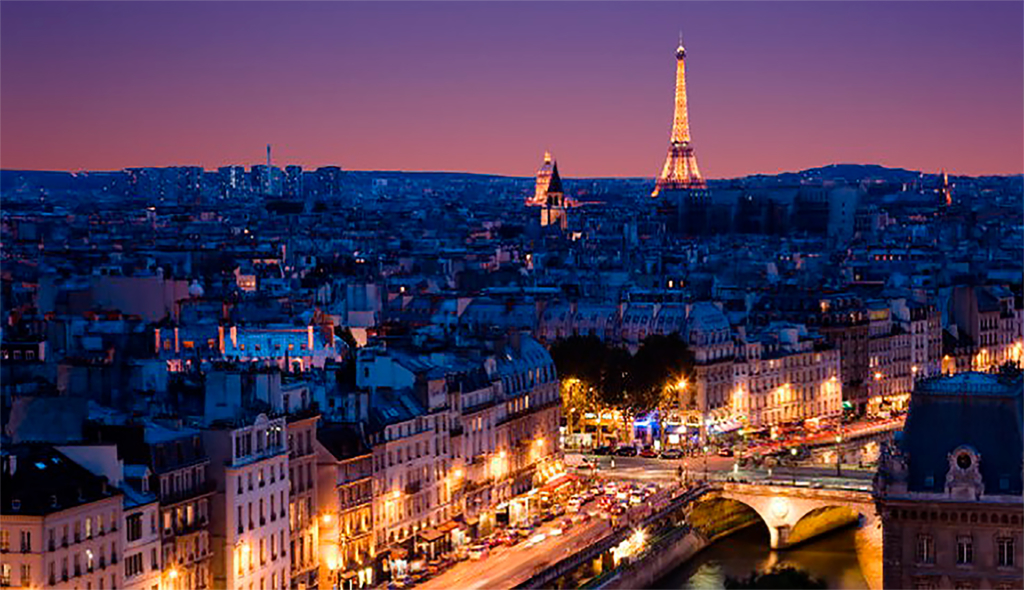
Source: Cheap Flights Lab
and will enter into force in 2020. It includes limiting the increase in global temperature to 2 ° C, starting from of the pre-industrial era, through the reduction of greenhouse gas (GHG) emissions, caused mainly by fossil fuels such as oil, gas and coal.
For more information, check our Magazine All About the Paris Agreement
Never has humanity obtained an agreement as advanced as that of Paris. Never has been as close as now to undertake concrete actions to prevent Global Warming continue its increase. It should also be noted that for the first-time terms such as those of the Paris Agreement, sponsored by the UN, UNFCCC, were accepted by almost all the countries on Earth. However, one issue is the good intentions, the spirit and the letter of the agreements and another that is observed, as we have seen so many times in the past, whose most unfortunate exponent was the derailment of the Kyoto Protocol.
Recommended reading “Brief history of the COPs”

What would happen if the objectives of
the Paris Agreement were not met?
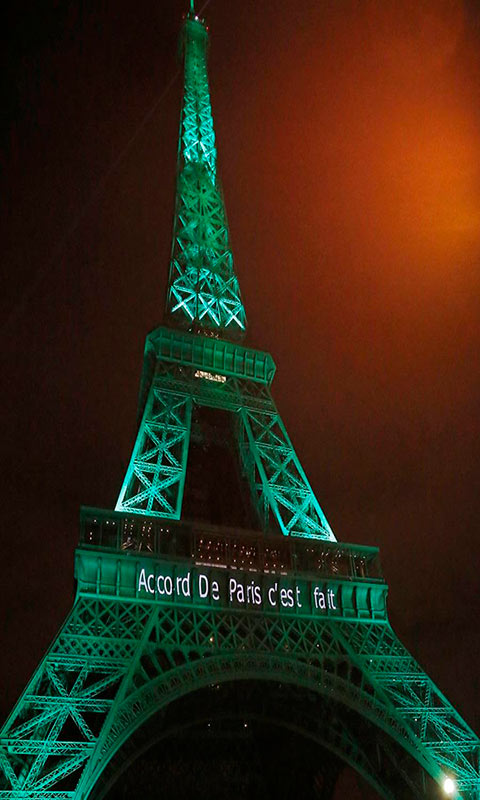
Source: El Diario de Ciudad Victoria
The failure of the Paris Agreement would be the failure of Homo sapiens. If we do not stop the increase in climate change and do not support sustainable development, we will all be losers. There are clear indications that we are going in a direction contrary to the 2015 agreements. The United States has withdrawn from the Agreement. Other countries have suggested similar purpose recently. Large investments are being made to extract traditional and non-traditional fossil fuels such as fracking. Entire forests have been erased from the map and other one continues to be deforested, such as the Amazon rainforest, the lung of the world, which is on the same path as the Borneo rainforest, where there has already been a dramatic local climate change.
There is a risk of breaking the permafrost seals in cold regions and burning peat bogs in tropical regions. In both cases, thousands of carbon deposits would be released in unpredictable amounts into the atmosphere. Fires occur more frequently and intensely each year. If we cannot stop all this, by the end of the century not only that the goal of -2ºC was not achieved, but that the global temperature could escalate to unimaginable levels.
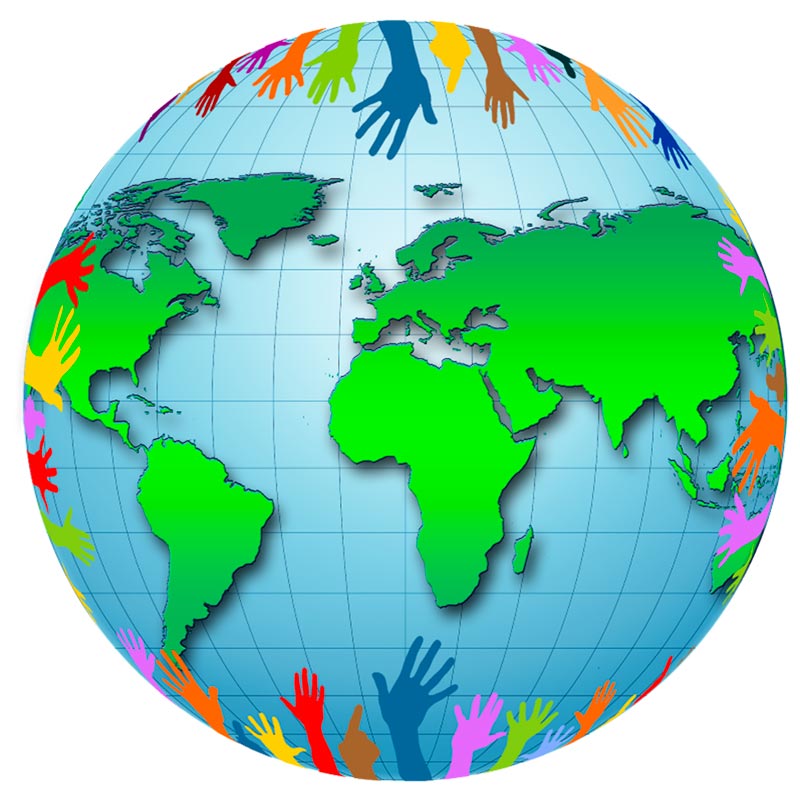
Source: Pixabay
What can we do to achieve
a better world?
You must stay informed about what is happening with our planet. Today there are many ways to participate and collaborate. The UN has permanent programs that cover various subjects related to environmental issues. Many people would be amazed to know how many children, youth and adolescents already participate. There are video contests, seminars, forums, chats, etc., practically all year round. You can enter by UN Climate Change
What we must do according to the Paris Agreement
Replacement of fossil fuels with clean energies
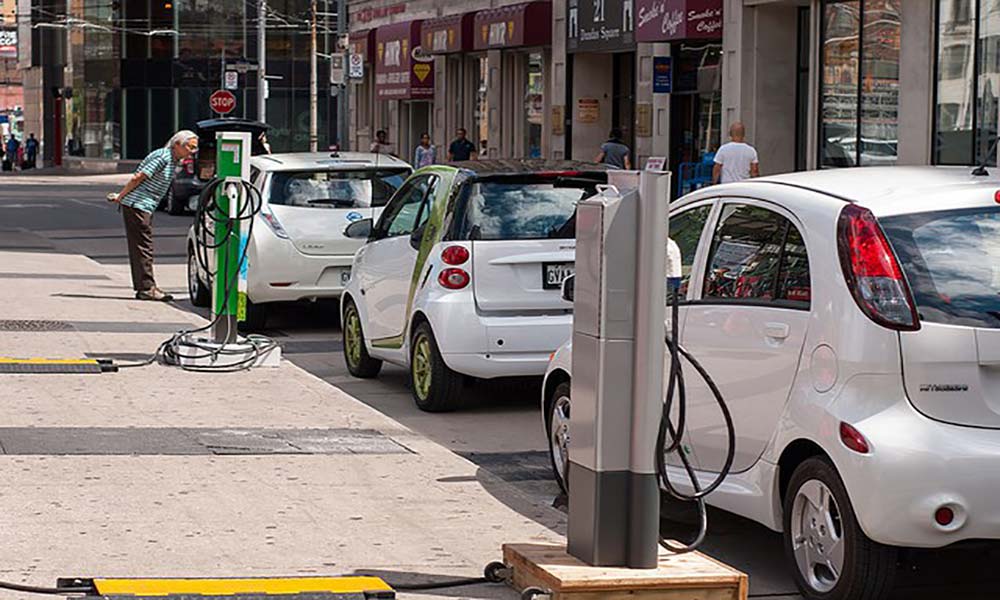
Source: EV Obsession
As more electric cars are added to the world’s traffic, climate change will be mitigated, as will climate change, since GHG emissions are largely due to automobile traffic. The accumulator is one of the primary devices of an electric car. Almost all electric cars use lithium-ion batteries, due to their high efficiency.
Wind power is clean, renewable and natural; therefore, it goes in the direction of the Paris Agreement and the fight against global warming and climate change. Wind energy, solar energy and lithium batteries from electric cars are the main weapons available to reduce greenhouse gas emissions and stop climate change.
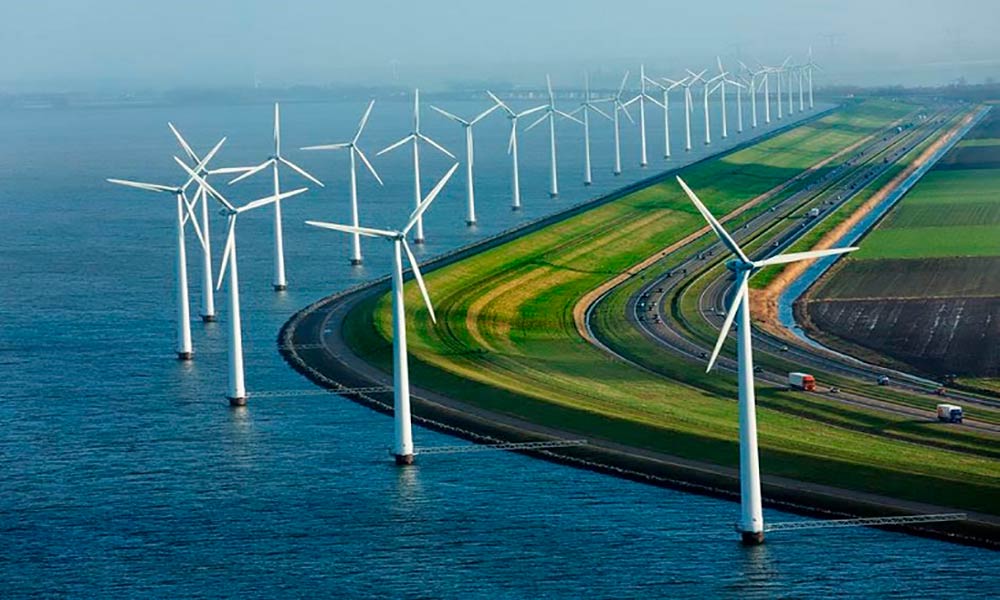
Fuente: ecoticias.com
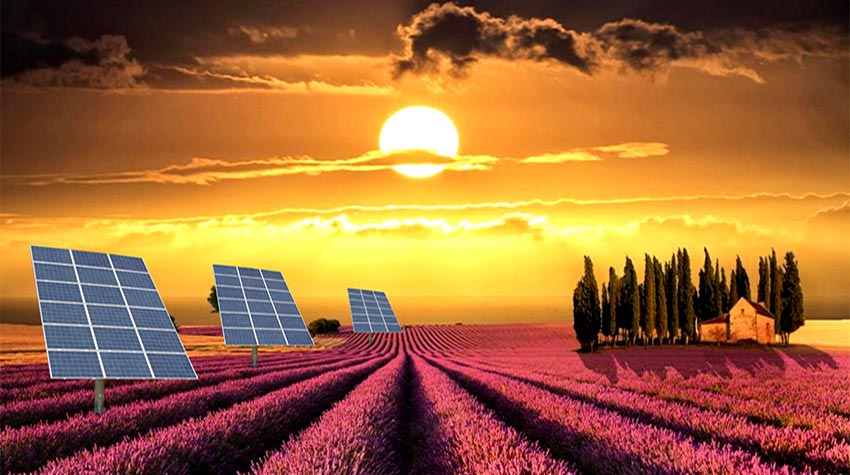
The silent solar photovoltaic panels convert sunlight into electricity through a process called photoelectric. Solar energy is inexpensive, inexhaustible and ensures the energy independence of countries. The cost of photovoltaic solar energy has become cheaper over time. The projections indicate that solar energy will become one of the main substitutes for fossil fuels and therefore an important weapon in the fight against climate change.
Other actions included in Paris Agreement to combat climate change
Mitigation

Source: WordPress
It is a term that means to attenuate or soften a negative thing, such as an illness or a headache. In the case of climate change, mitigation refers to the reduction of GHG emissions. They also include the improvement of the sumps to increase the absorption capacity of said gases. Also considered are programs such as carbon or energy taxes, and incentives for voluntary GHG reduction and its replacement by clean energy.
Adaptation

Soursce: WordPress
It refers to the actions that must be carried out to prevent changes that can produce undesired effects. In the case of climate change, adaptation includes initiatives and measures to reduce the vulnerability of natural and human systems. Countries and communities must implement preventive measures and practices to avoid probable harm. Short and long-term measures must be contemplated, through environmental management, planning and disaster management.
Resilience

Source: Ray Human Capital te2015.blogspot.com
Resilience is the ability of a species or system to recover from a disturbing agent. Regarding climate change, resilience refers to the capacity of an ecosystem to absorb disturbances without significantly altering its structural and functional characteristics and can return to its original state after the adverse factor has ceased. The Paris Agreement places special emphasis on increasing mitigation, adaptation and resilience capacity to reduce vulnerability to climate change.
What is
Climate
Ambition?

Source: WordPress – modif SGK-PLANET
The dictionary definition of ambition: “It is the intense and vehement desire to achieve a difficult thing to reach, especially wealth, power or fame.” Starting from this statement, the definition of climatic ambition, one of the keys of the Paris Agreement to achieve its main objective, would be something like: having a strong will to achieve something as difficult as winning the fight against climate change.
British economist Nicholas Stern called on countries to “increase the ambition of their climate action plans to avoid the worst future impacts of climate change.” Some economists concluded on national commitments to reduce emissions “that are not enough to achieve the internationally agreed goal of preventing global warming from exceeding 2 ° C this century”, which is a claim on the lack of climate ambition of the Nations Patricia Espinosa, Executive Secretary of the United Nations to Climate Change, permanently urges countries to increase their ambition to reach signed agreements.

Where we are?
Where do we want to go?
How do we get there?

Source: Ahorro Energético
The Talanoa Dialogue and the COP24, Katowice, Poland – Dec, 2018
The Talanoa Dialogue is an international conversation in which countries verify progress and seek to increase global ambition to meet the objectives of the Paris Agreement on climate change. The Dialogue was launched at the United Nations conference on climate change (COP23) in Bonn in November 2017. Recently the UN opened a portal especially for the Talanoa Dialogue, through which it invites all countries and other interested parties, including the business sector, investors, cities, regions and civil society, to send proposals to the Talanoa Dialogue around three central questions: Where are we? Where do we want to go? How do we get there? The concept “Talanoa”, used in the Pacific Islands for decades, was presented by Fiji, the nation that presided over the COP23. The promise of the portal: “The Talanoa Dialogue will be constructive, facilitating and oriented to provide solutions. In addition, it will also allow technical and political exchanges.” Text taken for the most part from the mentioned site.
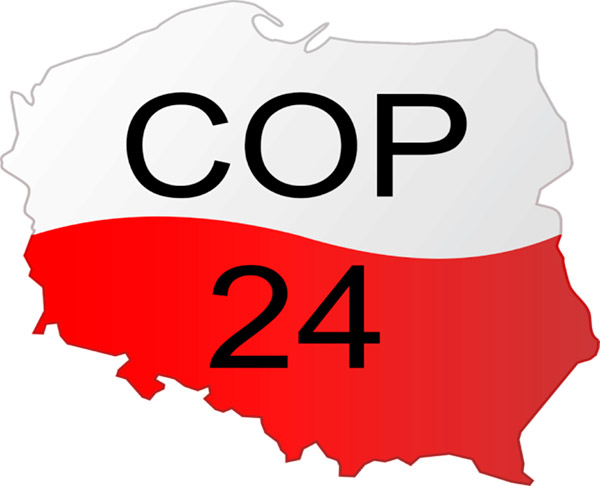
SGK-PLANET
The Talanoa Dialogue will be extended during 2018 and will play an important role in the COP24 that will take place in the Katowice city, Poland, December 2018.
The objective of Talanoa “It is to reach an inclusive, participatory and transparent dialogue; share stories, build empathy and make wise decisions for the common good.”
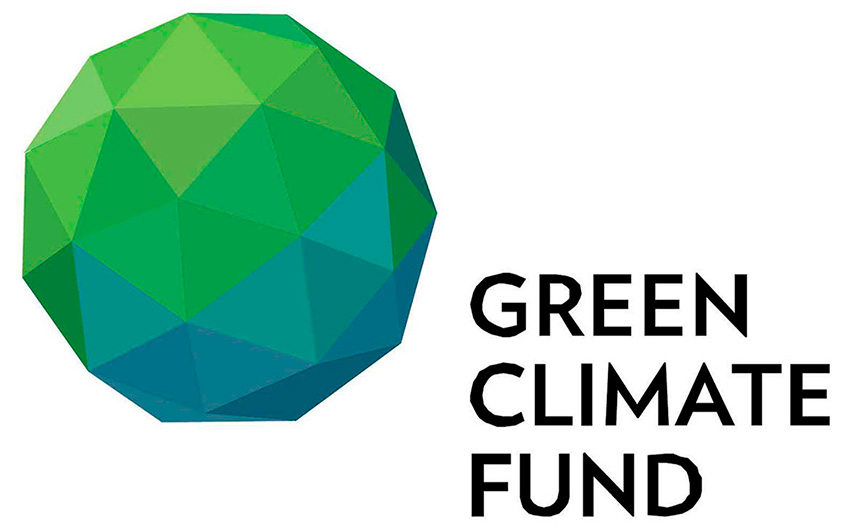
What is the Green Climate Fund?
The Green Climate Fund was created at the 16th Conference of the Parties to the United Nations Framework Convention on Climate Change in 2010. Its objective is to finance projects, programs, policies and other preventive activities or consequences of the effects of Climate Change , to support developing countries. Its goal is to raise US $ 100 billion per year starting in 2020.
Our Carbon Footprint
The carbon footprint is the quantification of the impact caused by human activities in the environment. It is expressed in mass of carbon dioxide equivalent. The carbon footprint is calculated through an inventory or analysis according to the nature of the issuer, according to international standards. For example, the carbon footprint of an organization is obtained by analyzing its greenhouse gas (GHG) emissions during a year or other predetermined period, by accumulating an inventory of these. In the case of a product or service, the GHG emissions carried out during its life cycle are studied. The personal carbon footprint is an instrument that allows an individual to calculate their emissions of greenhouse gases and know their participation in the increase of global warming.

Source: Pinterest
Green Cities
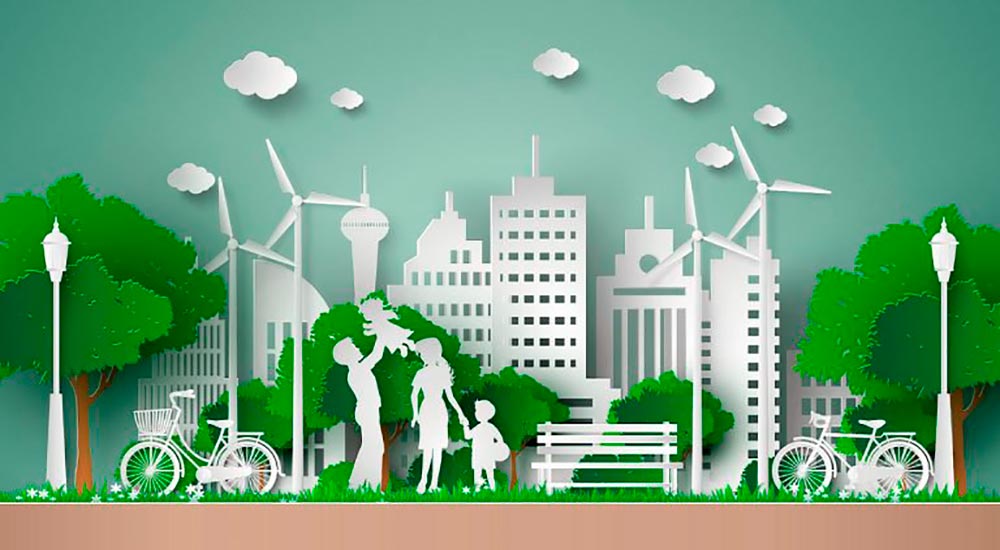
Source: Forbes México
Sustainability is development that meets the needs of the present without compromising the capacity of future generations, guaranteeing the balance between economic growth, care for the environment and social welfare.

Source: icasas.mx
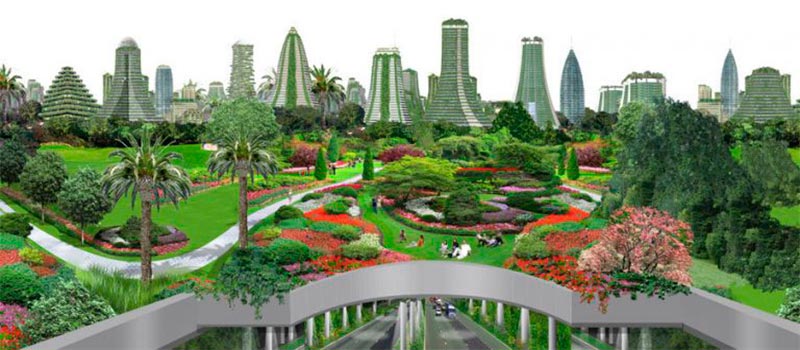
Source: Parques Alegres
What are green cities?
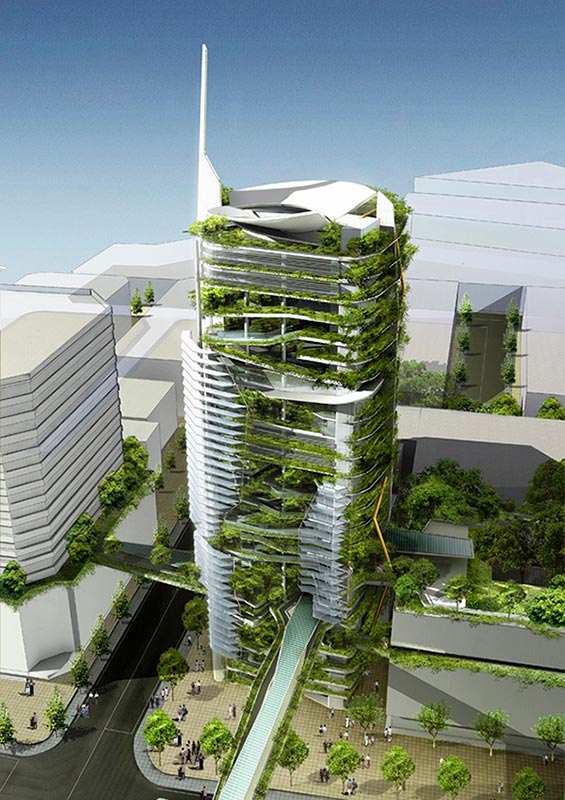
The green cities are not only buildings with balcony full of flower or plants or walls full of vines, something like the Hanging Gardens of Babylon, 21st century version. Neither are cities only with beautiful parks, as they make think the images that accompany this text. What we call the green city is a concept to get as close as possible to the definition of sustainable development, thought towards the end of the 20th century, which emphasizes the reconciliation between economic well-being, natural resources and society.
The green cities are being built considering clean energy such as wind and solar, waste management, sustainable transport such as electric cars, green spaces for recreation, bicycle paths, areas for sport and culture, for the enjoyment of its inhabitants. Special emphasis is placed on the management and efficient use of natural resources such as drinking water, electricity and the recycling of wastewater.



